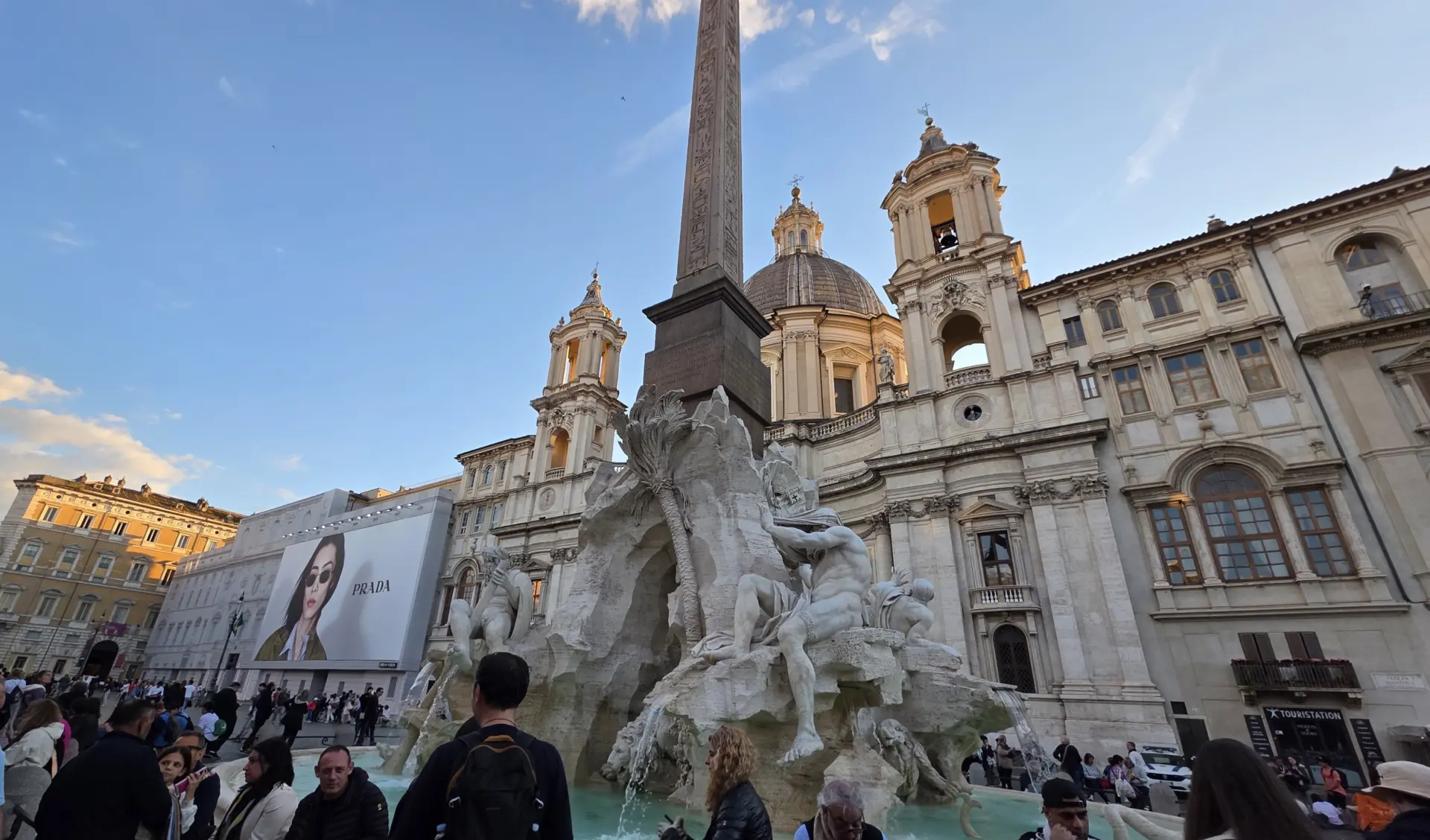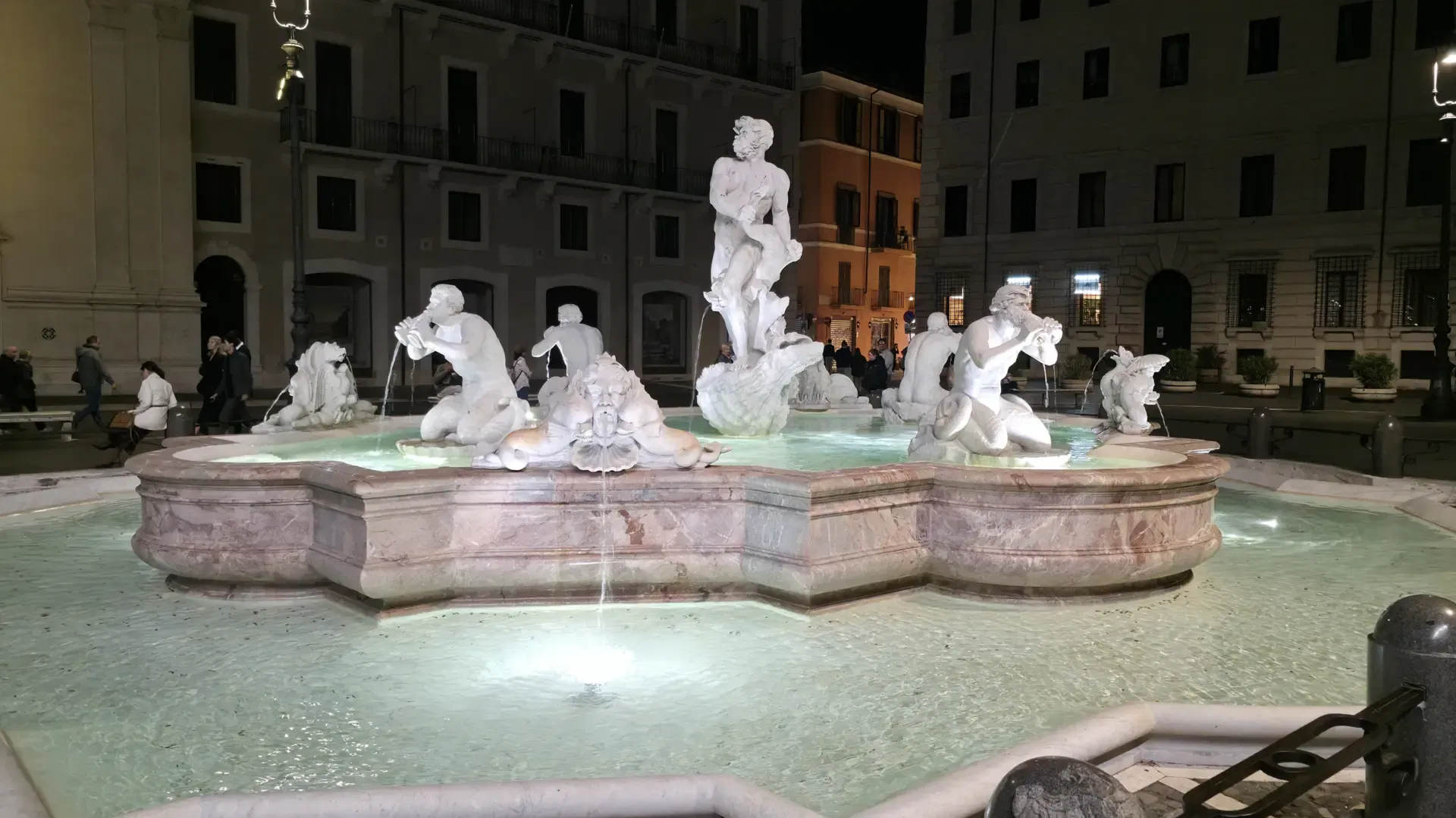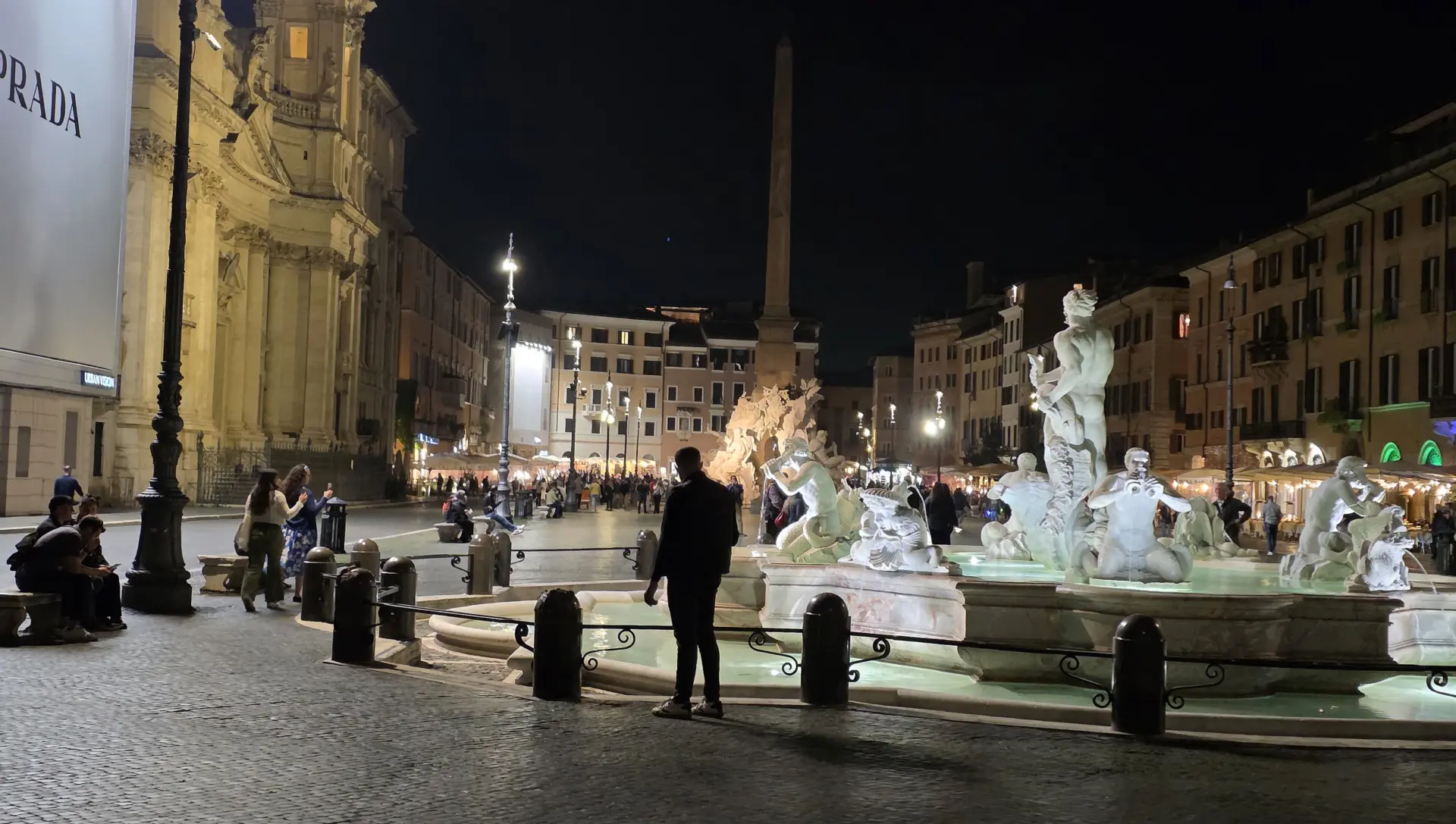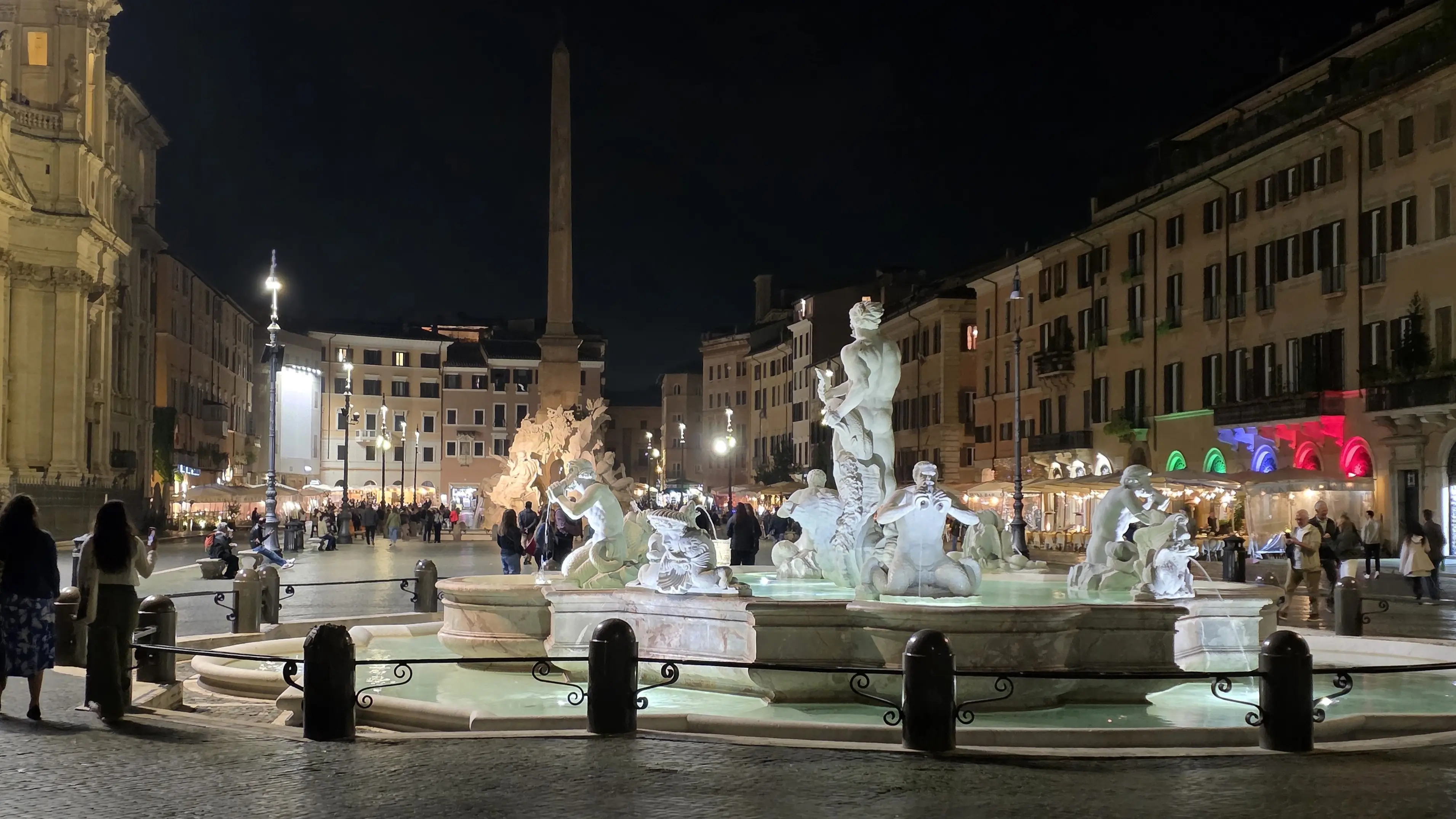Ciao, my friends! 💕 If you asked me to name a place in Rome where history, art, architecture, and joy all come together in one open-air masterpiece, I’d answer without hesitation: Piazza Navona. It’s theatrical, romantic, endlessly photogenic, and has that intangible magic that only Rome can deliver. From the moment I stepped into Piazza Navona, I felt like I had entered a grand open-air theater. The fountains glistened in motion, artists lined the square sketching portraits beneath fluttering umbrellas, and the gentle sound of music filled the air. Everywhere I turned, there was something beautiful, something timeless. I stopped in my tracks, completely spellbound.
🏛 A Little History: From Stadium to Stage
What makes Piazza Navona especially fascinating is that it sits atop the ruins of the Stadium of Domitian, an ancient Roman arena built in 86 AD to host athletic games in the Greek tradition. The piazza preserves the same elongated, oval shape as the original stadium, so in a sense, you’re walking the track of ancient competitions.
By the late 15th century, the space began transforming into a public square, but it was during the 17th century, under Pope Innocent X, that Piazza Navona blossomed into a Baroque masterpiece. Much of its grandeur is owed to two of Rome’s most celebrated (and famously competitive) architects – Gian Lorenzo Bernini and Francesco Borromini – whose contrasting visions and talents gave the square its theatrical beauty.

💦 The Fountains: A Symphony in Stone
Piazza Navona isn’t just a square, it’s a stage set with three spectacular fountains, each with its own story and personality.
Fontana dei Quattro Fiumi (Fountain of the Four Rivers): Designed by Gian Lorenzo Bernini in 1651 and commissioned by Pope Innocent X, this dramatic centerpiece features an ancient obelisk rising above four majestic river gods, symbolizing the Nile, Ganges, Danube, and Rio de la Plata. One god covers his head to represent the then-unknown source of the Nile, while another seems to recoil dramatically, fueling a beloved local legend that it’s a subtle jab at Borromini’s church façade nearby. Whether fact or folklore, it adds flair to the square’s theatrical energy.

Fontana del Moro: Anchoring the southern end, this lively fountain features a powerful figure, often referred to as a Moor, wrestling a dolphin, surrounded by tritons and sea creatures. Originally designed by Giacomo della Porta, the central statue was later added by Bernini. It’s elegant, expressive, and just cheeky enough to capture the soul of Rome.

Fontana del Nettuno: At the northern tip of the square, Neptune is frozen mid-battle with a writhing sea monster, while nymphs and cherubs swirl around him. The fountain’s basin dates to the late 16th century, but the sculptural drama was added in the late 19th century to bring balance to the piazza. It’s a theatrical burst of marble motion, like a myth frozen in time.
📍 Practical Tips for Visiting Piazza Navona
- 🎨 Must-Sees: The three fountains (Four Rivers, Moor, Neptune), Sant’Agnese in Agone, local street artists, and the Stadium of Domitian ruins beneath the piazza (via the underground museum).
- 🕰 When to Visit: Morning for peaceful photography, late afternoon for golden hour light, evening for lively ambiance and illuminated fountains.
- 🚇 Getting There: Closest metro is Spagna (Line A), about a 15-minute walk. The piazza is best reached on foot or by bus from nearby attractions.
- 📷 Photo Tips: For a symmetrical view, stand near Fontana del Moro and look north. At dusk, capture reflections of Bernini’s masterpiece in the central basin.
- 💡 Insider Tip: Look down near the northwest corner, you’ll find a glass panel revealing the ruins below. For a closer look, visit the Stadium of Domitian underground museum (Via di Tor Sanguigna, 3).
🧡 Why Piazza Navona Stole My Heart
It’s easy to fall in love with the grandeur of the Colosseum or the elegance of the Trevi Fountain, but Piazza Navona feels alive. It pulses with conversation, art, movement, and memory. It’s not just a place to visit, it’s a place to be. Whether you’re watching fountains shimmer at golden hour, wandering among sketch artists, or simply enjoying a quiet espresso as Rome unfolds around you, Piazza Navona gives you permission to slow down, look up, and feel something deeply beautiful.

Final Thoughts
In a city layered with time, Piazza Navona is where past and present dance together. You’ll feel the ancient stadium beneath your feet, the Baroque brilliance above, and the heartbeat of Rome all around you.
Take your time. Linger a little. Let the fountains speak and the piazza sing. 🎶
xoxo,
Bubbly 💕

